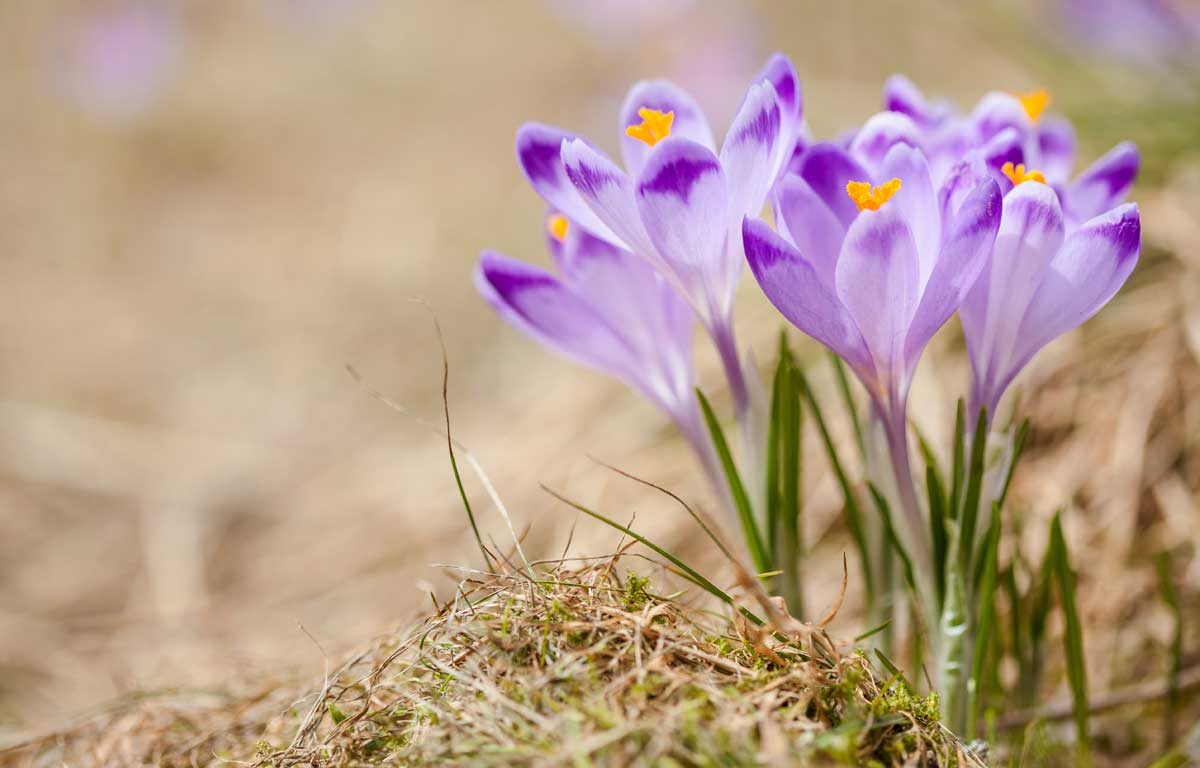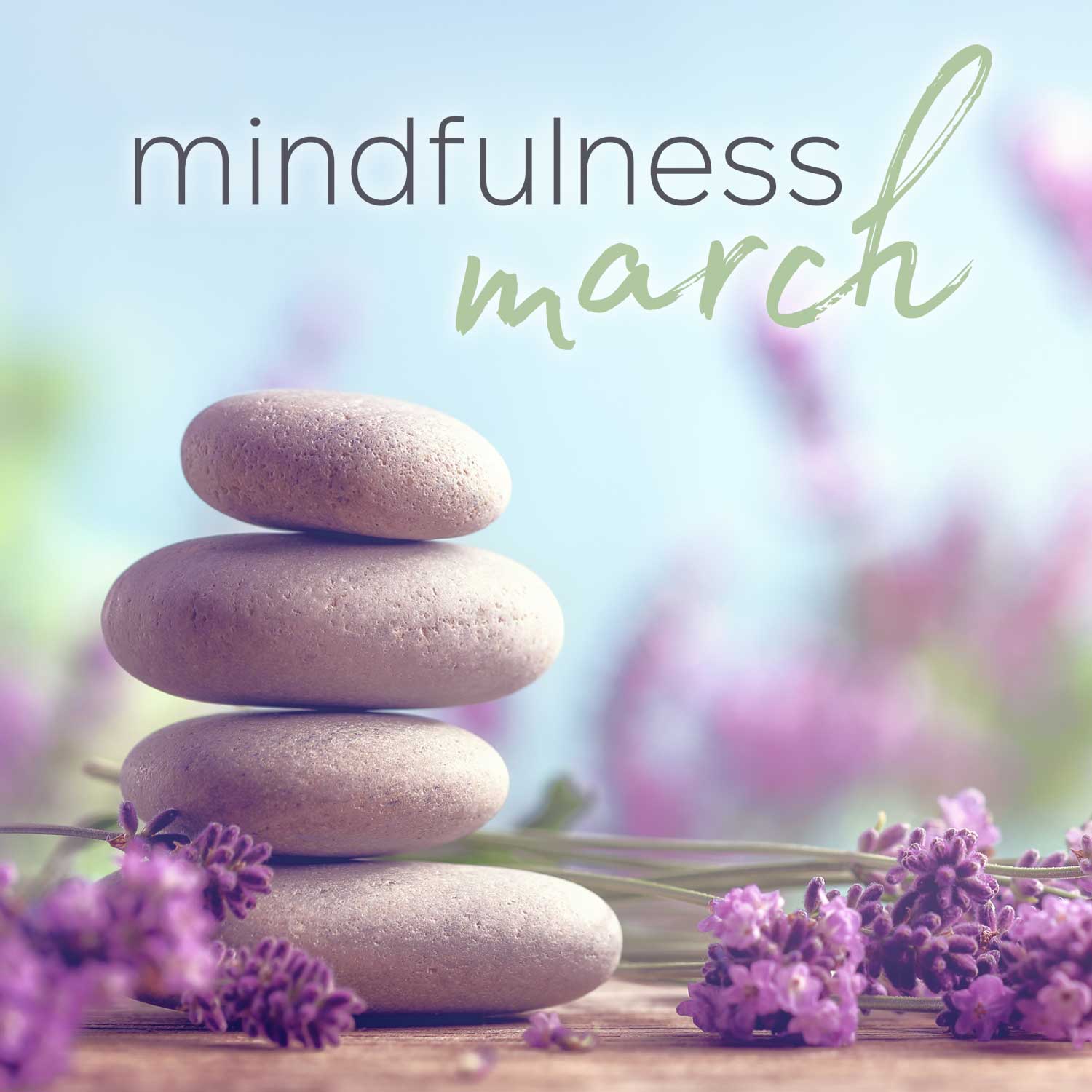01 Mar Mindfulness March
It is hard to believe that we are already in our third month of 2017! How are you feeling? I’m feeling very excited about the topic for this month! We are going to be discussing MINDFULNESS. What is your reaction to this word? Do you dislike meditating and react negatively to the concept of mindfulness?
I hope you’ll still consider reading on! There are many more aspects to mindfulness than just a formal seated meditation practice. This blog post will help you understand the benefits of practicing mindfulness and will give you some practical tips to get started. I am very passionate about this topic, especially because I’ve seen the benefits in myself! My hope is for everybody to feel confident in using mindfulness to live a happier, healthier, and more fulfilling life. I also discuss it with every single one of my patients and that’s why I knew it had to be an important part of our Year of Health.
If you’re new to my blog, welcome and thank you for joining my Year of Health! Make sure you check out Jogging January and Fight the Flu February so you don’t miss out on any of my tips for staying healthy this year.
What is mindfulness?
Mindfulness is our innate ability to be fully present in the moment. It is all about focusing on where we are, what we are doing, the thoughts we are having, and the sensations we are feeling. In our society today, we are often over-worked and in a chronic state of stress so we end up going through the motions of our day and living in auto-pilot mode. This causes us to lose touch with our bodies, get lost in our thoughts, and miss out on the day-to-day joys of life. To be more mindful, we must be curious, non-judgmental and observant, as well as accepting of our current state. We aren’t living mindfully if we are avoiding the negative aspects of life and the difficult feelings. If you have feelings of anxiety, for example, but you spend all of your time avoiding everything that brings up those feelings, you’re often perpetuating the problem and likely not living a very satisfying life. We need to learn how to be okay with both our positive and negative feelings to be truly mindful and content with ourselves.

Why practice mindfulness?
We should practice mindfulness in order to start living our lives fully. Honestly, I don’t like considering mindfulness as a practice because it should be a way of living. Living mindfully makes us happier, helps us experience more enjoyment out of life, improves our focus and productivity, and reduces stress. Practicing mindfulness with formal meditations and other daily exercises will help us feel more confident in our ability to bring mindfulness into all aspects of our lives, especially the difficult times.
Who would benefit from practising mindfulness?
Everybody! And I really mean EVERYBODY. I can’t think of a single person who wouldn’t benefit from practicing mindfulness and this is why I discuss it with all of my patients, maybe not at first, but definitely as part of my on-going care. Children, teenagers, young adults, middle-aged adults, and older adults, all can benefit from mindfulness. It can be especially supportive for managing certain health conditions and symptoms, including anxiety, depression, ADHD and learning disabilities, obesity and eating disorders, hypertension (high blood pressure), irritable bowel syndrome/celiac disease/gastroesophageal reflux disease (or basically any other digestive condition), chronic pain, and SO MANY OTHERS.

How do you add mindfulness to your daily life?
The best thing you can do is find healthcare professionals, group classes, or instructional books/videos to help guide you in learning the practice of mindfulness. It can be challenging when you first start and it helps to have someone to keep you accountable and to share your struggles and wins. It is important to be able to discuss any challenges that arise and how to overcome them. Read on as I share with you my favourite resources for making mindfulness more accessible for everyone.
Formal Guided Meditations
In order for mindfulness to become a way of life, you need to practice the skills first. Guided meditations are the perfect opportunity to get this practice. I recommend spending at least 10 minutes daily in a formal, seated, and guided meditation practice. The longer, the better! If this feels too challenging for you, start with the daily mindfulness activities and work up to doing a seated meditation. To ensure you keep up your motivation and avoid getting bored with these daily meditations, I recommend finding an app that will offer you a wide variety of different meditations, as well as support and inspiration. There are many options available but I’ll list my top recommendation here and you can check out the other options in the resources section.
My Top Recommendation: Headspace
This is my top recommendation because it starts with the basics and teaches you about mindfulness through the guided meditations and instructional videos, offers a wide variety of guided meditations with different focuses (anxiety, depression, sleep, focus, cancer, pregnancy, sports, etc.), tracks your progress, includes the ability to connect with friends who also use Headspace, has options to set daily reminders, and is constantly updating with new meditation packs. You can also follow Headspace on social media for continued motivation and information. It does cost a small monthly fee for the app but it is a reasonable price for the amazing quality of mindfulness education that you’ll be receiving!
Mindful Activities of Daily Living
In addition to a daily formal guided meditation, choose a daily activity that you regularly do mindlessly and focus on doing it mindfully instead. Choose something like brushing your teeth, doing the dishes, showering, etc. Use a reminder in your phone, or a post-it note, to remind yourself to do your chosen activity mindfully. You can also set general mindfulness reminders on your phone, sign up for newsletters about mindfulness, and/or follow mindfulness pages on social media. Every time something about mindfulness pops up in your email inbox, on your desktop, in your news feed, or into your mind in any way, that’s an added moment of mindfulness in your day. Slowly increase your daily mindful activities so that more and more of your day is based around mindfulness.

Mindful Walking/Commuting
Commuting is the perfect time to practice mindfulness! It can be frustrating when your route is very busy and it often turns into time spent worrying about your upcoming day or ruminating over past situations. Instead, use it as a chance to be grateful for your current situation and mindful about your present moment. Notice how your feet feel as they touch the ground or the pedal, notice how your muscles feel as they tense and relax with each step or turn of the wheel, be aware of the weather and the other people or cars around you, and find enjoyment in what you’re doing. You can let thoughts come into your mind but then note them, label them, and let them go.
Mindfulness at Work
When I ask my patients about the stressors in their lives, the most common answer is work. For some people it is a positive stressor and for others it is very negative. No matter what your work situation, I’m positive you can improve the fulfillment you get out of your job once you add mindfulness to your day. The best way to do this at the office is to schedule short mindful pauses throughout your day. These pauses can be as short as taking 30 seconds to check in with your body, notice any sensations you’re experiencing, become aware of your current thoughts, and ask yourself what you need in that moment. Be kind to yourself and ensure you’re giving your body what it needs. It might be that you need to take a quick break to use the washroom, grab a cup of water, eat a snack, or take a quick walk outside. Even if you don’t think you have a minute to spare, I promise you’ll be more productive if you’re listening to your body. To remind yourself to be mindful throughout the workday, set reminders on your phone or put up post-its in your office. Consider talking to co-workers about also practicing mindfulness and being accountable to each other.
Mindfulness for the Whole Family
Mindfulness will work best if the entire family practices it. It helps to be able to share your experiences, talk about it, and remind each other to be mindful in the tough situations. Mindfulness is an especially amazing skill for children to learn! It will help them understand their emotions and learn how to manage them more effectively. The parents will benefit from their children being more mindful of their emotions and the children will benefit from their parents being more mindful and present for them. Win-win!
In order for children to effectively learn mindfulness techniques, I highly recommend that the parents learn mindfulness themselves first. The next step is to find child-appropriate guided meditations so that the whole family can practice together. Sitting Like A Frog by Eline Snel is a great book, which describes mindfulness and how to teach it to your children. It comes with a CD of guided meditations that are kid-friendly. You can also check out Headspace, Smiling Mind, and Stop, Breathe & Think for their children’s packs. I also recently discovered (thanks to a recommendation from a patient!) the Cosmic Kids Zen Den YouTube channel, which is full of tons of different guided mindfulness meditation practices for children.

March Goal
Take 10 minutes out of each day to practice a mindfulness activity (whether it be an activity of daily living, walking, commuting, at your office, or a formal guided meditation) throughout the entire month of March.
Once you have practiced mindfulness for these 30 days, I hope you’ll see the improvements in your mind and body and will continue throughout the rest of the year and many years to come!
For added motivation to start your mindfulness practice, watch Andy Puddicombe’s Ted Talk (The creator of Headspace): All it takes is 10 mindful minutes.
Finding it challenging to start a mindfulness practice on your own or looking for more support? Email me at questions@emilymartinnd.com and we can discuss whether it would be beneficial for you to book a one-on-one appointment with me to help guide you through the development of your mindfulness practice. Visit my clinics page for more information.
Mindfulness Resources
As with any new skill, having the proper resources is incredibly important. I have compiled the mindfulness resources that have been most beneficial for myself and my patients but there are TONS of resources out there. If I’m missing any of your favourite resources, please let me know and I would love to check them out.
Books
- Full Catastrophe Living by Jon Kabat-Zinn
- Wherever You Go, There You Are by Jon Kabat-Zinn
- The Mindful Way Through Anxiety by Susan M. Orsillo and Lizabeth Roemer
- The Mindful Way Through Depression by Mark Williams, John Teasdale, Zindel Segal and Jon Kabat-Zinn
- The Mindfulness and Acceptance Workbook for Anxiety by John P. Forsyth and Georg H. Eifert
- The Happiness Trap by Russ Harris
Websites
Mindful.org – This website is a great resource for many articles about how to practice mindfulness, the benefits of mindfulness, and current research in the area. To receive regular updates, you can like the Facebook page and join the mailing list. You can also subscribe to the Mindful magazine.
Greater Good in Action – I recently discovered this free resource. It contains a wide variety of free mindfulness meditations.
Centre for Mindfulness Studies – This is a centre in Toronto that offers mindfulness training programs. Check out their program list to see if there is one that suits your needs. You can also like their page on Facebook for updates.
Mindfulness Exercises
Mindfulness Exercise for Kids: Mindfulness Buddies
- Have your child choose their mindfulness buddy (a stuffed animal/doll).
- Have them lie down on a yoga mat, bed, or couch with the buddy on their stomach.
- Encourage them to take slow and deep breaths. You can count them through each inhale and exhale (Inhale 1,2,3 and Exhale 1,2,3).
- Encourage them to notice their buddy rising and falling with each breath.
- Ask them if they feel any other sensations in their body with each breath.
- Practice this with them every day and then encourage them to breathe with their mindfulness buddy when they are experiencing difficult emotions.
Here is a list of 7 mindfulness exercises to practice with your children.
Mindfulness Grounding Exercise: 5, 4, 3, 2, 1
The 5, 4, 3, 2, 1 exercise is a common sensory awareness grounding exercise that you can use as a tool to relax and get through difficult moments, both at night and throughout the day.
- Describe 5 things you see in the room.
- Name 4 things you can feel (“feet on the floor”, “air in the nose”, etc.).
- Name 3 things you hear right now.
- Name 2 things you can smell right now (or 2 smells you like).
- Name 1 thing that you love about yourself.
If you’re in a location that is not relaxing for you, you can also do this with a focus on your favourite happy place (5 things you would see in your happy place, 4 things you would feel, etc.).

